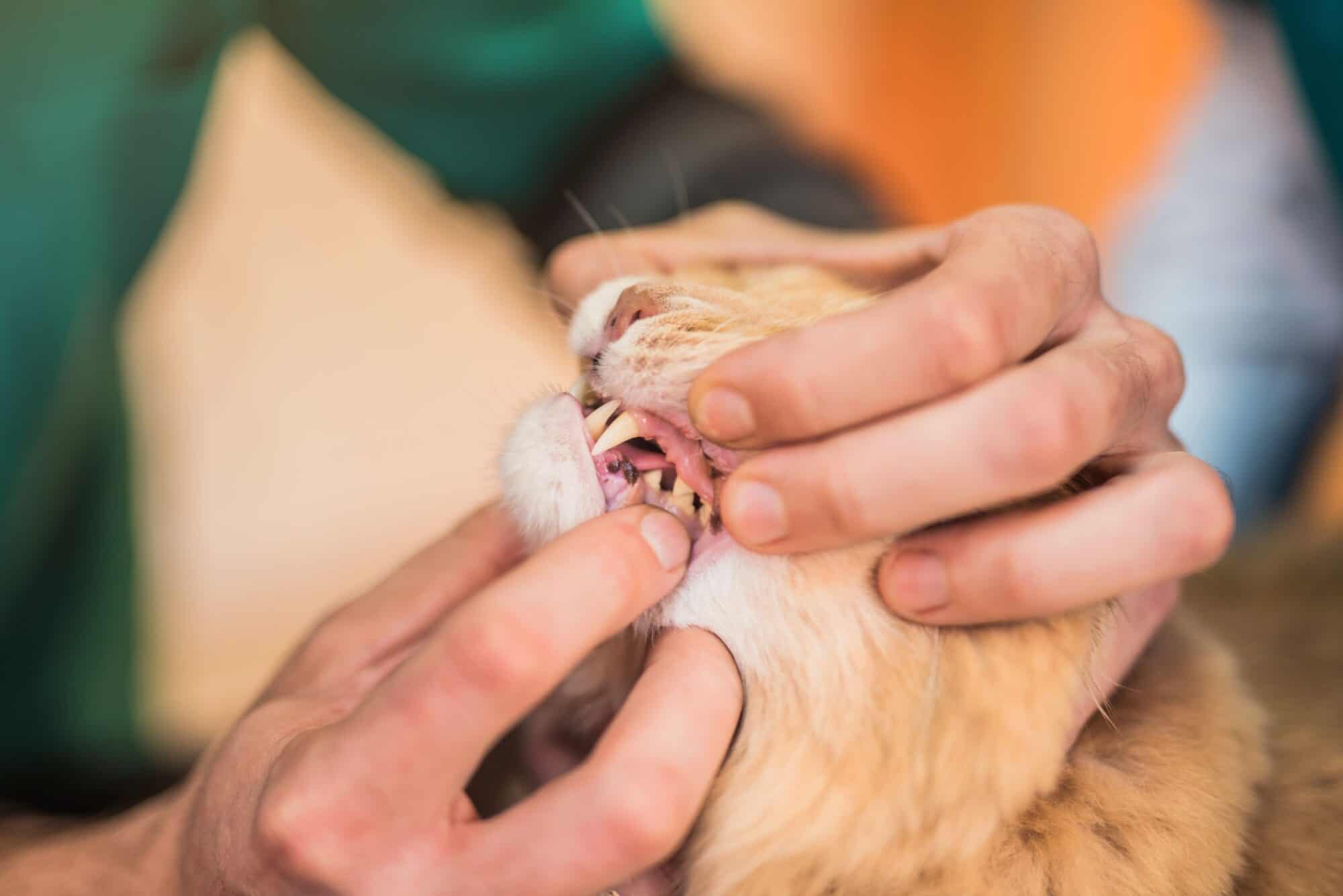The Keystone to Health: Pet Dental Care ![Paw Print Icon]()

While many pet owners largely accept stinky doggy or kitty breath as part of the territory, the fact is that halitosis requires prompt attention. As the first outward sign of periodontal (gum) disease, bad breath indicates that something is “off” inside a pet’s mouth. Periodontal disease affects a majority of pets over age three; however, with a concerted, daily effort toward pet dental care, this condition is 100% preventable.
Far-Reaching Benefits
The mitigation of bad breath is certainly an important goal. After all, a fresh-smelling mouth can lead to more cuddles and close time. And while a regular approach to pet dental care reduces the funk coming from a pet’s teeth and gums, the benefits to their overall health and longevity cannot be understated.
What’s Really Going?
When oral bacteria mixes with food particles, dental plaque forms on the surface of the teeth. Minerals in saliva harden the plaque into tartar, most notably on the gum line. You might see a yellow or brown discoloration on the back molars. Over time, as plaque and tartar cover more surface area of the teeth, the gums will recede. Untreated periodontal disease can lead to bone and tissue damage, tooth loss, and pain.
Periodontal disease has four stages. The first stage is characterized by gum inflammation, or gingivitis. This happens because of tartar accumulation on the gum line. By stage four, gum bleeding, pain, and tooth loss is inevitable.
Plotting a Course
We check for dental health during every wellness exam, and work closely with owners on recommendations for at-home dental care. Daily brushing, dental chews, dental toys, and prescription diets and treats can all reduce plaque and tartar build-up. Plus, pets enjoy these!
Annual dental cleanings under anesthesia are part of a proactive approach to pet dental care. During this safe procedure, we can learn the extent of disease through a full oral exam and dental X-rays.
Poor Buddy!
In addition to bad breath, signs of dental disease include:
- Drooling
- Inappetance or dropping food during meals
- Favoring one side of the mouth over others while eating
- Pawing at the mouth
- Pain of sensitivity to touch
- Changes in behavior
- Bleeding or swollen gums
- Cracked teeth
- Missing teeth
Depending on the stage, pain medication, antibiotics, and/or dental surgery may be part of treatment.
Routine Pet Dental Care
Without routine pet dental care, periodontal disease can lead to (or worsen) the following health conditions:
- Heart disease
- Infection or inflammation of the liver and/or kidneys
- Organ damage
Systemic disease is a terrible consequence of unchecked periodontal disease, and entirely preventable. Problems caused by tooth and gum pain, oral bacteria, and related health conditions can lead to emergency care. The cost of routine pet dental care is often a fraction of the expense of disease treatment, and saves a pet from experiencing unnecessary pain.
If you have questions about best practices for pet dental care at home, feel free to call us at (719) 839-0446, or make an appointment online.
At Home Pet Doctor is always happy to help you!
